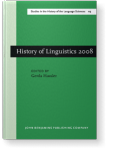The ‘floating’ linguistic sign
The image of floating, fluctuation, waves, and displacement recurs with surprising consistency in key descriptions of the linguistic sign. Its prominence in the theoretical pronouncements of linguists (Michel Bréal, Ferdinand de Saussure, Antoine Meillet, Kenneth Pike) and sociologists (Émile Durkheim, Marcel Mauss), Claude Lévi-Strauss) suggests a conceptualization of the linguistic sign as important as the much discussed two-sided sheet of paper, or the game of chess, in Saussure’s lectures. The fluid, wave-like linkage of sound and thought, the arbitrary and differential nature of the linguistic sign, and the elusive, vacillating ‘values’ of terms all reflect Saussure’s view of the linguistic sign as ever-fluctuating. This metaphor also figures in Meillet’s theory of grammaticalization, in Bréal’s understanding of both Humboldt’s inner language form, and the relation of language to thought in early mythology, in Lévi-Strauss’s concept of the floating signifier as well as in Pike’s view of language as a ‘field’ consisting of waves and swells.
